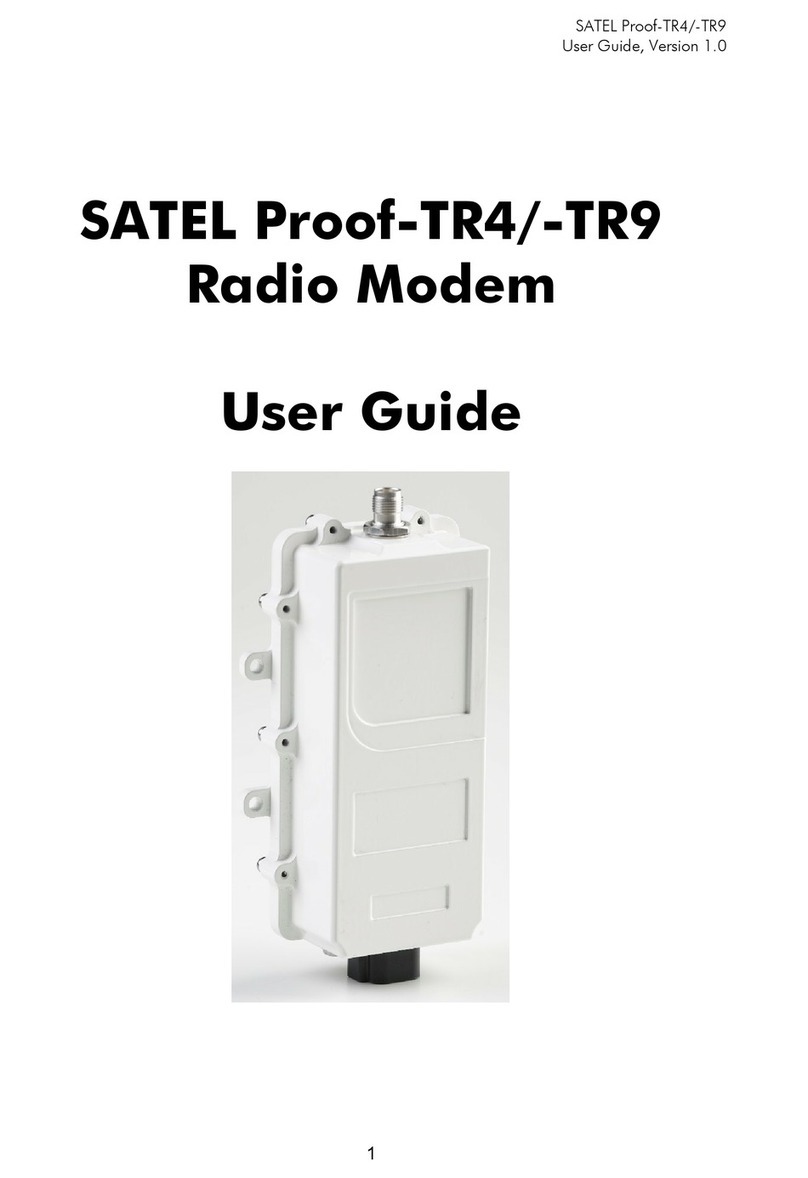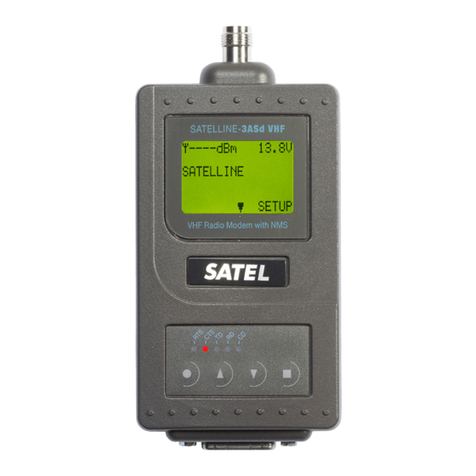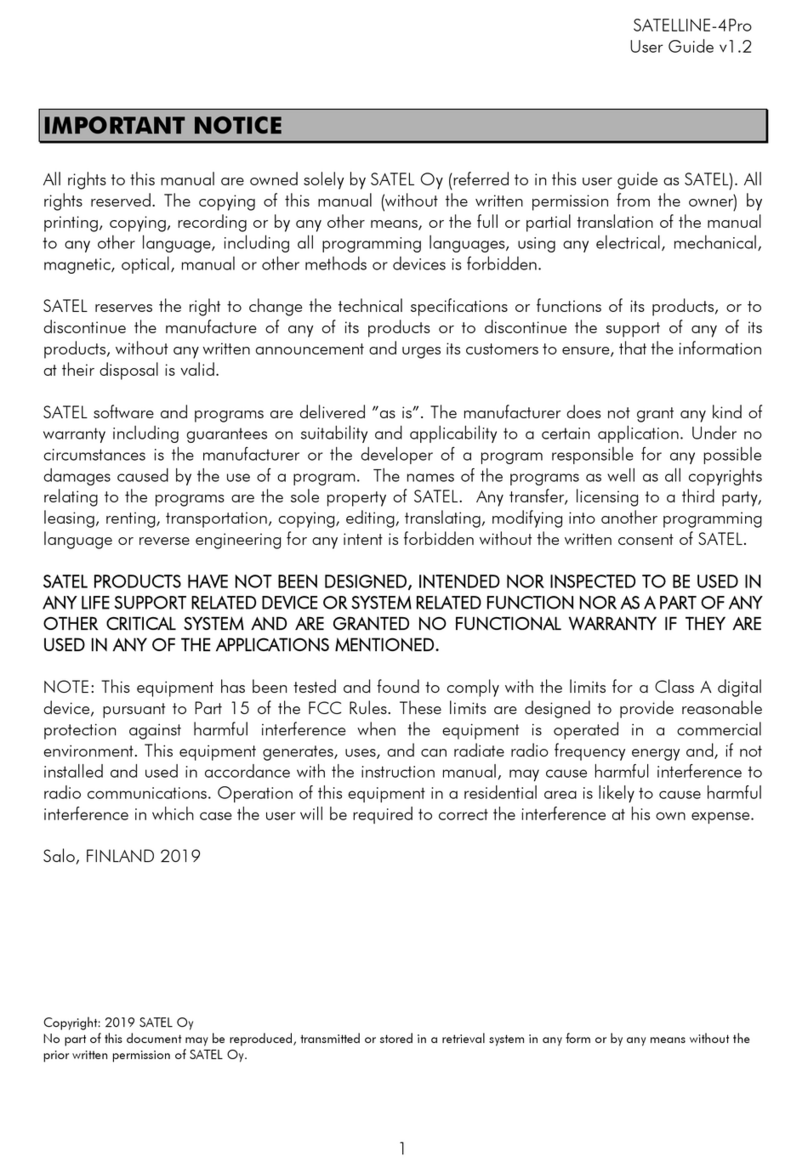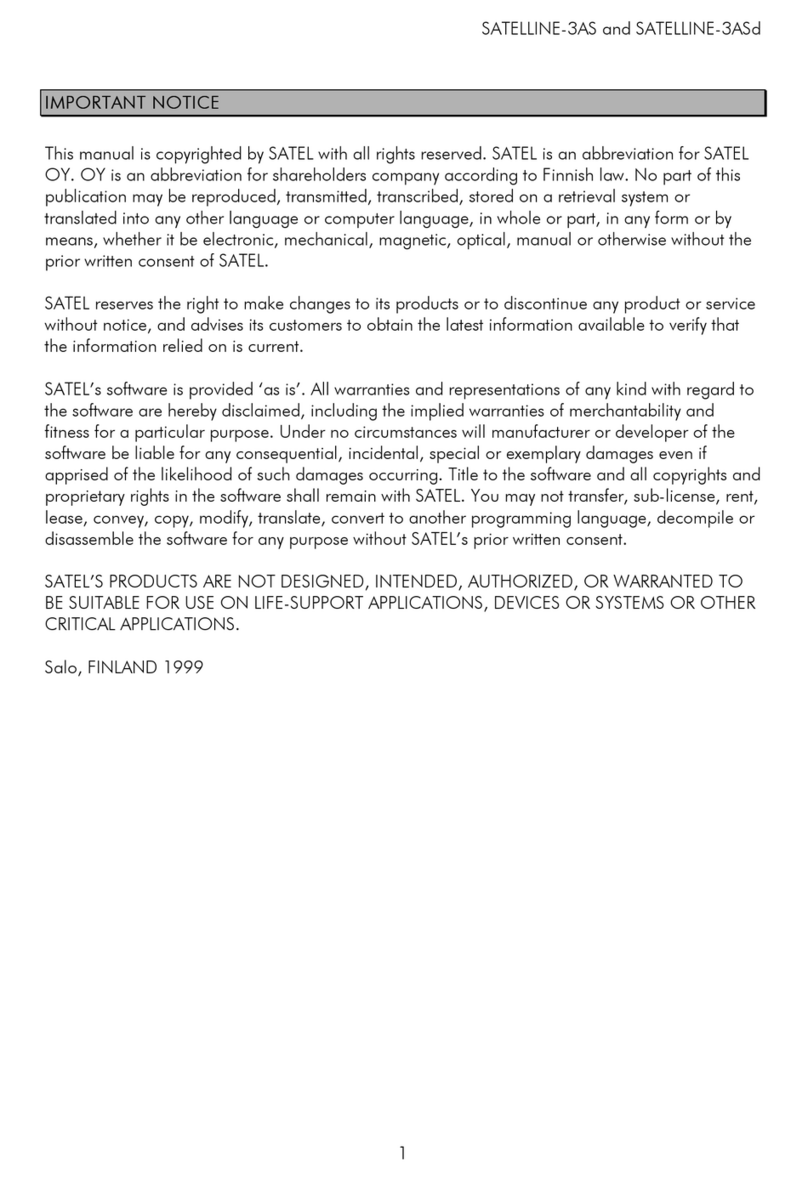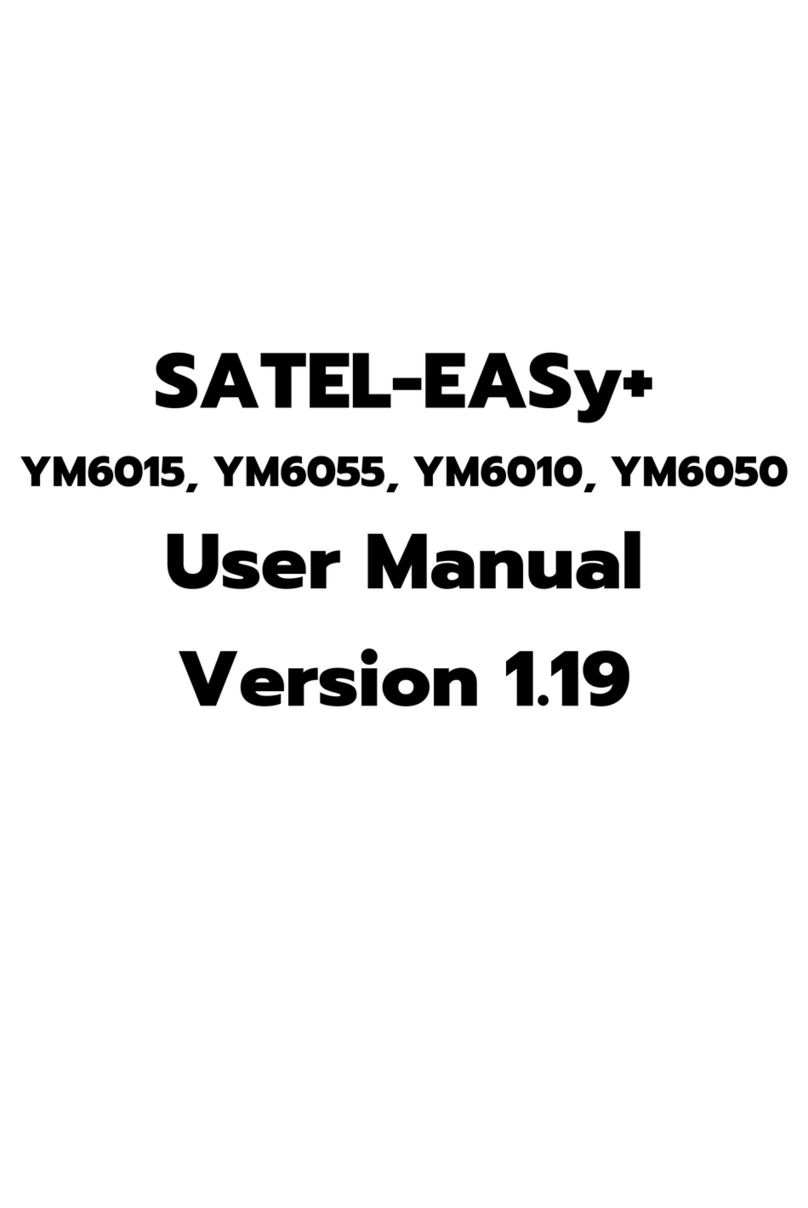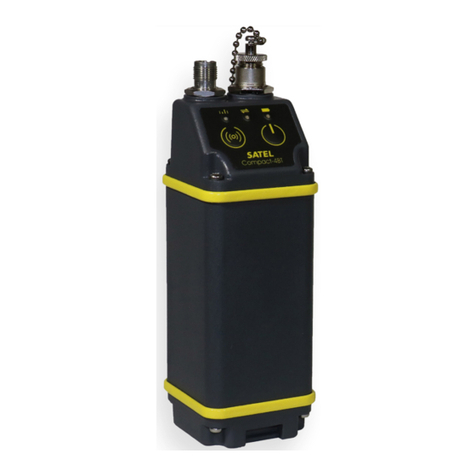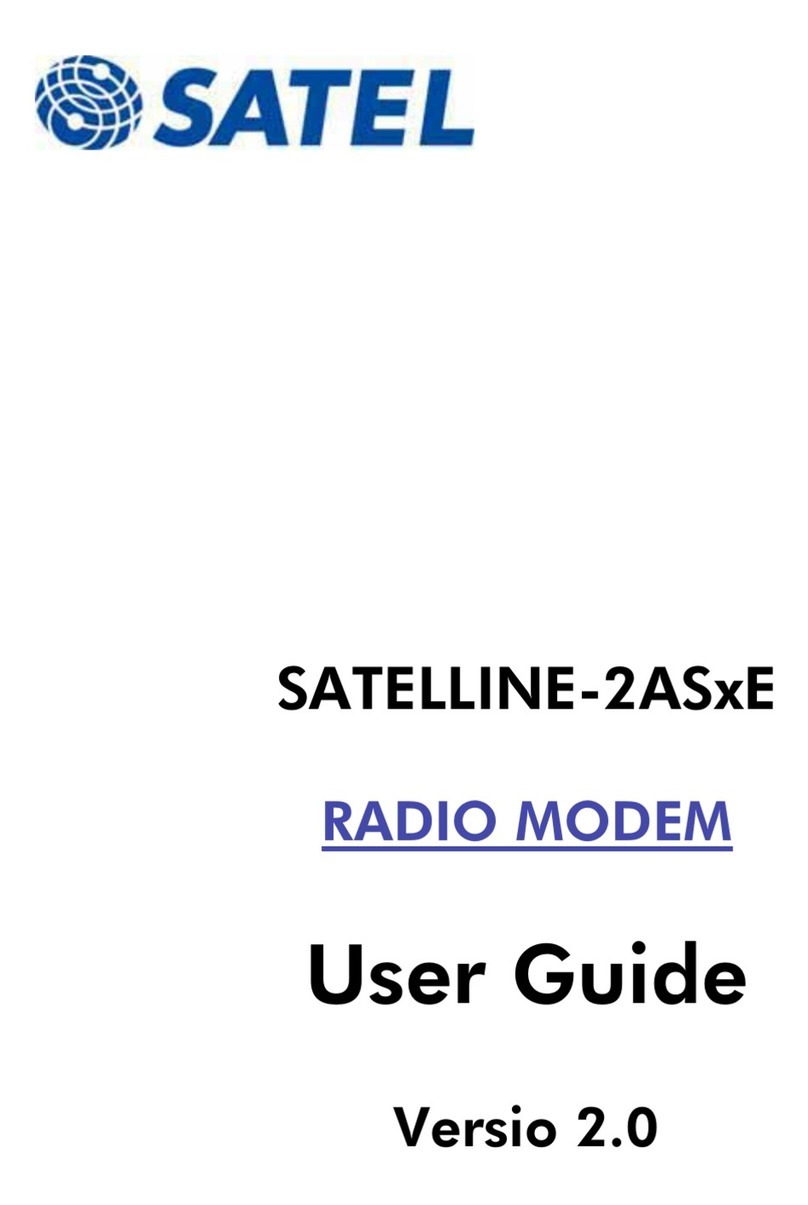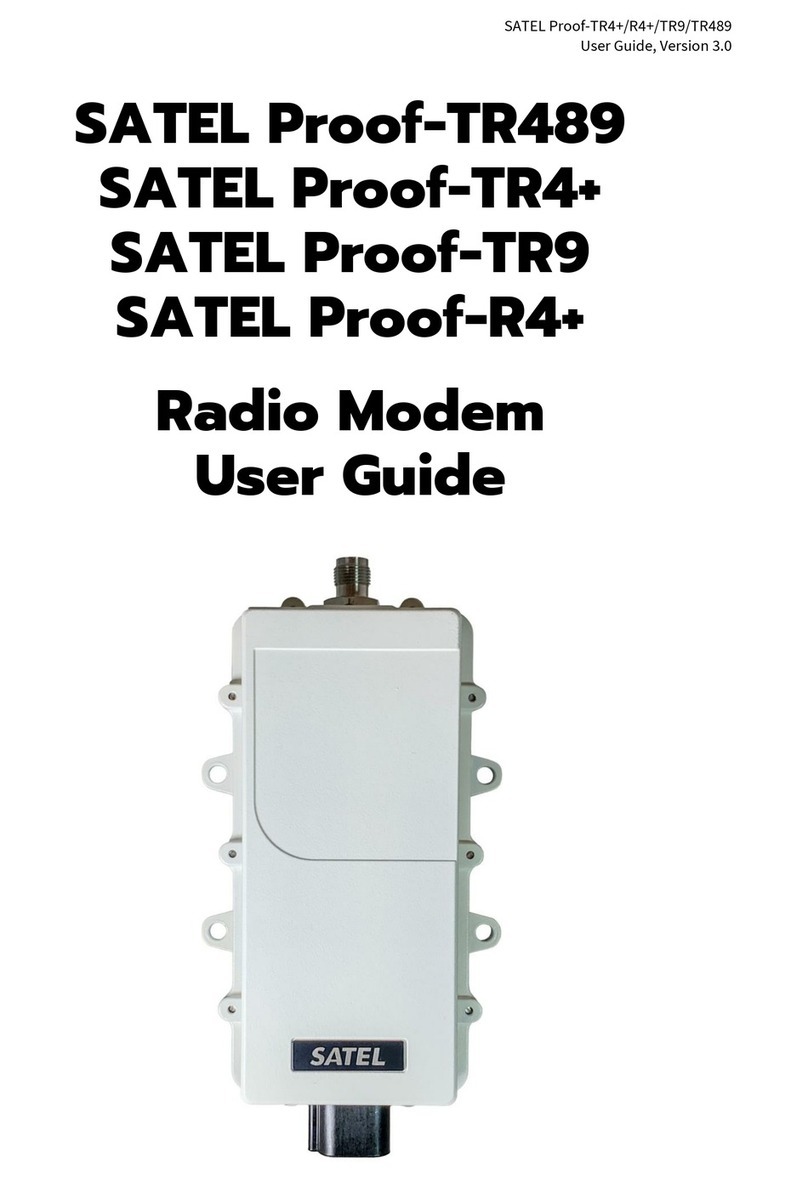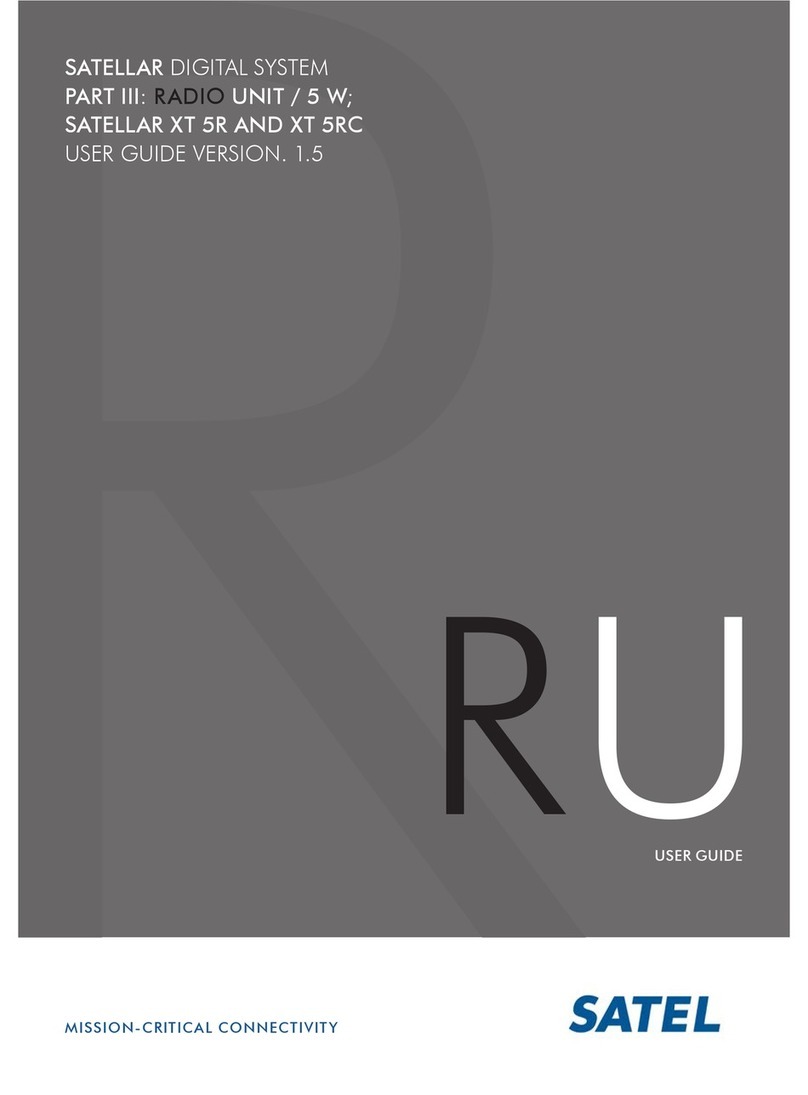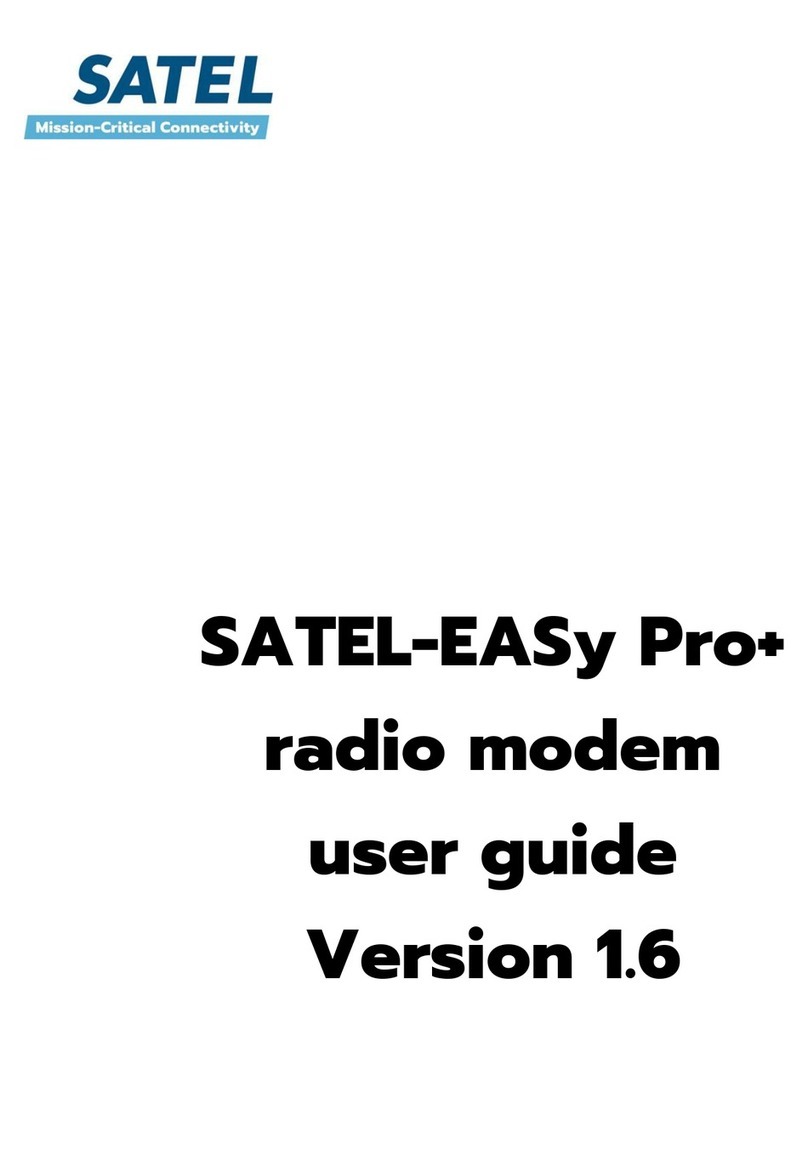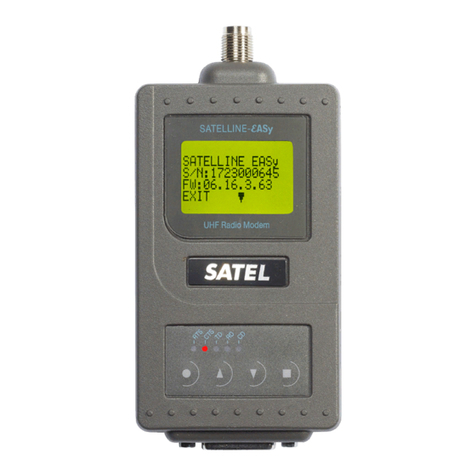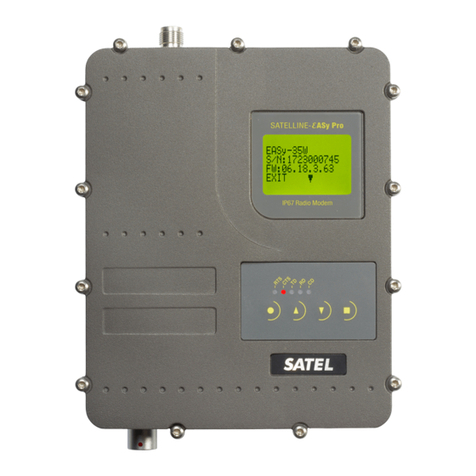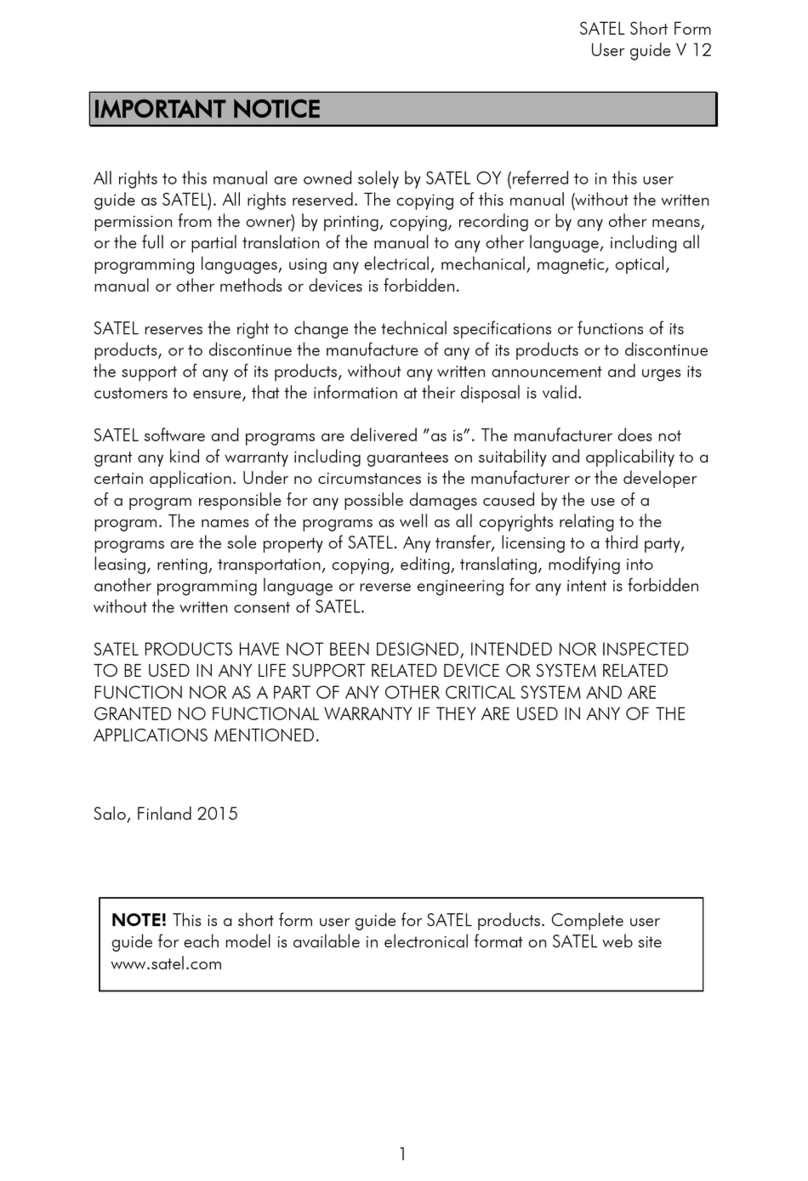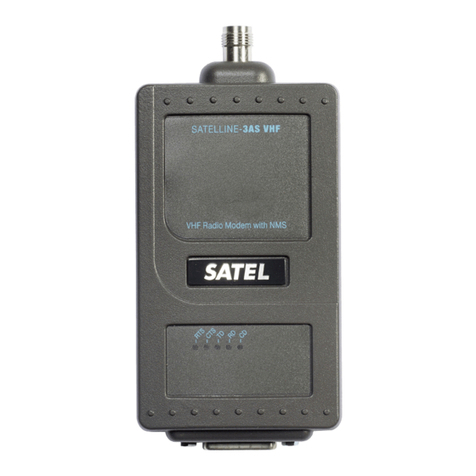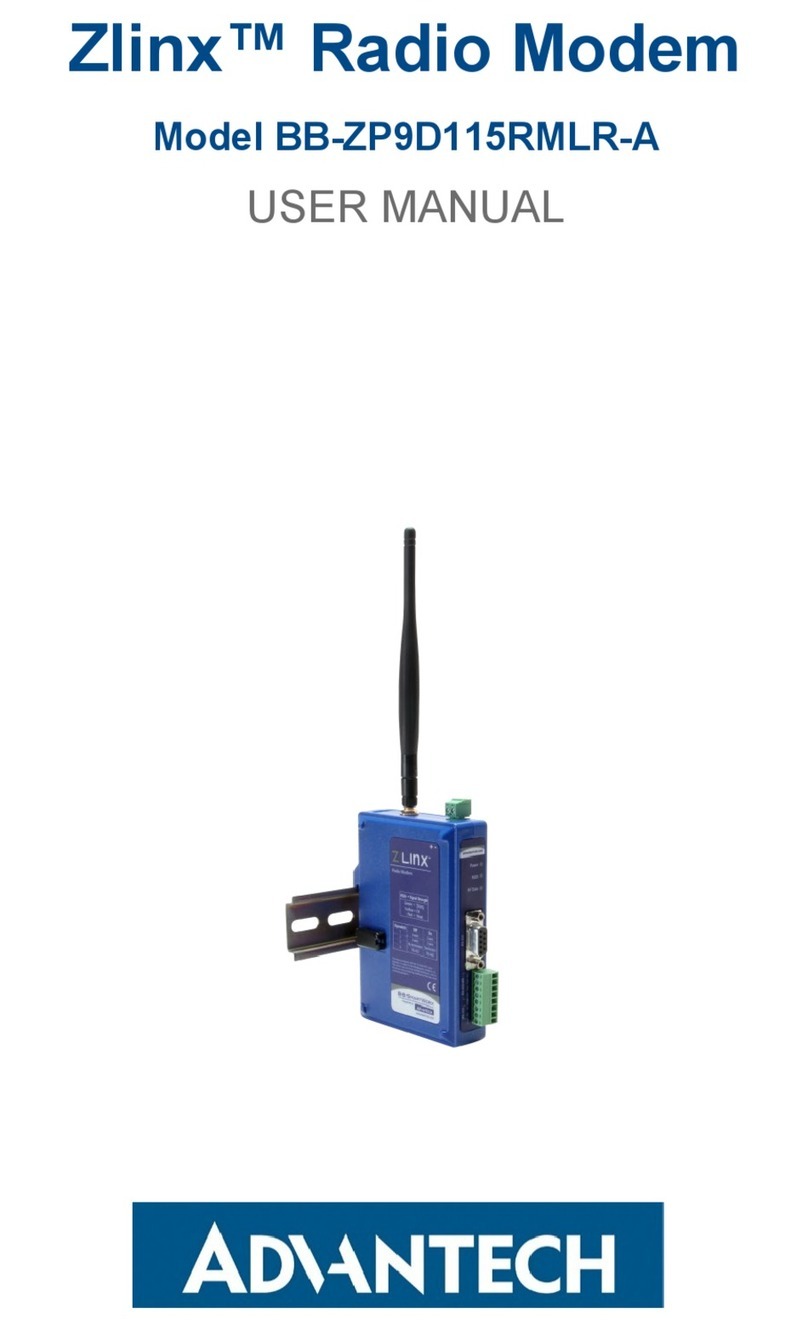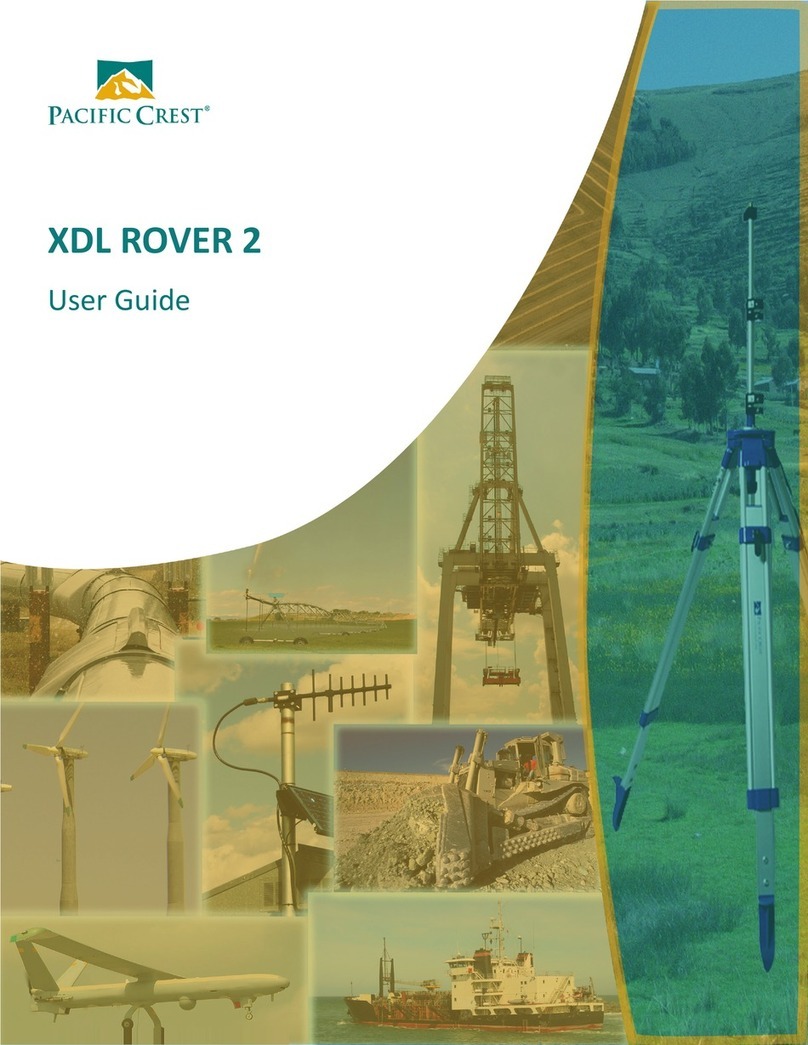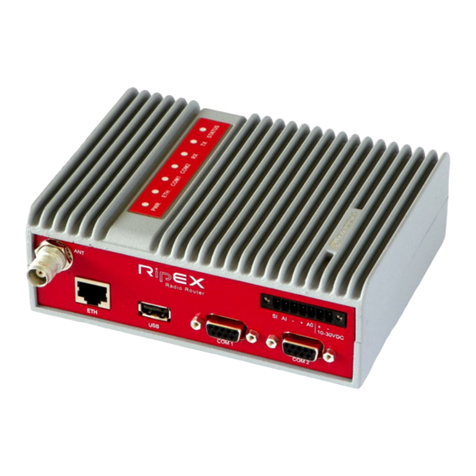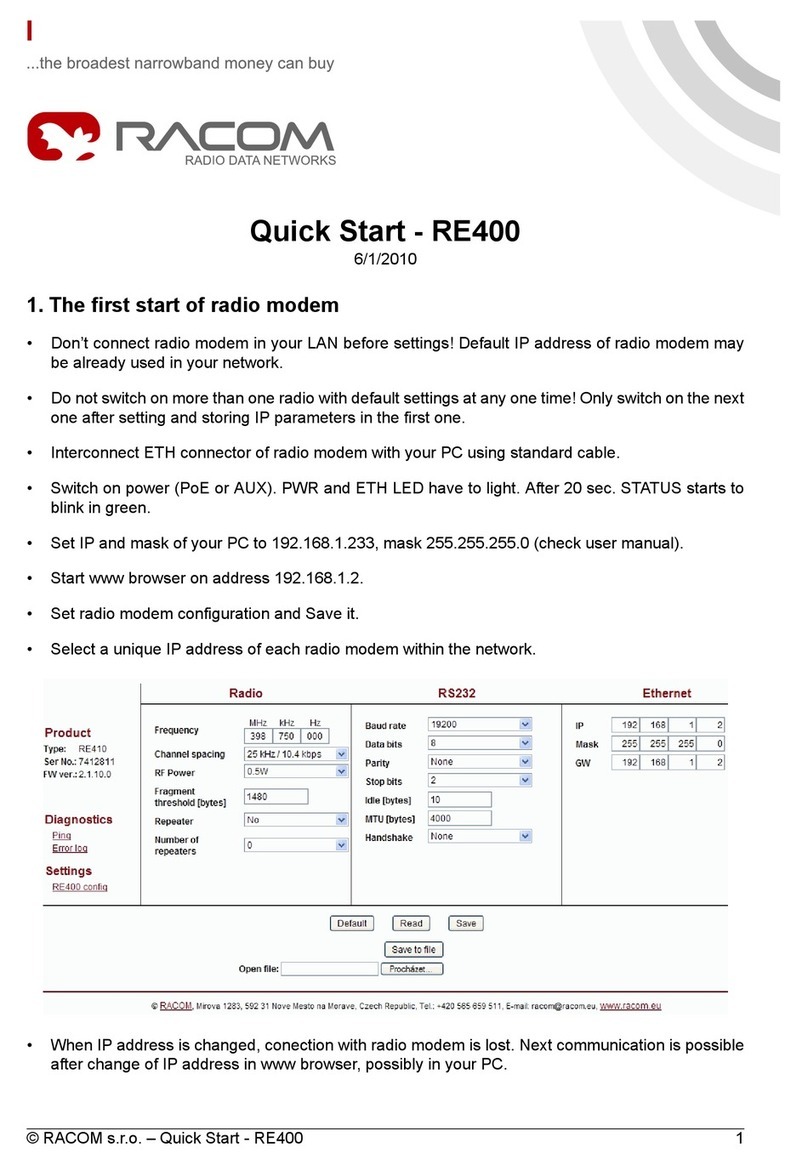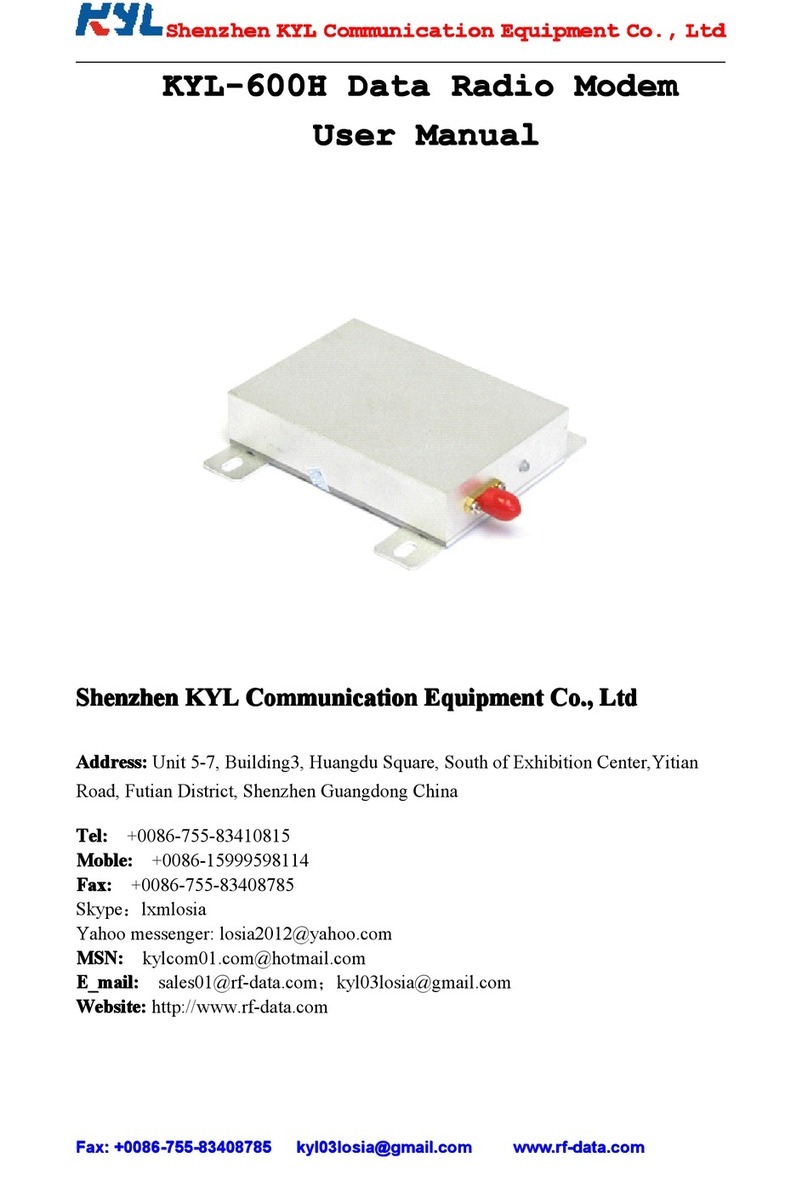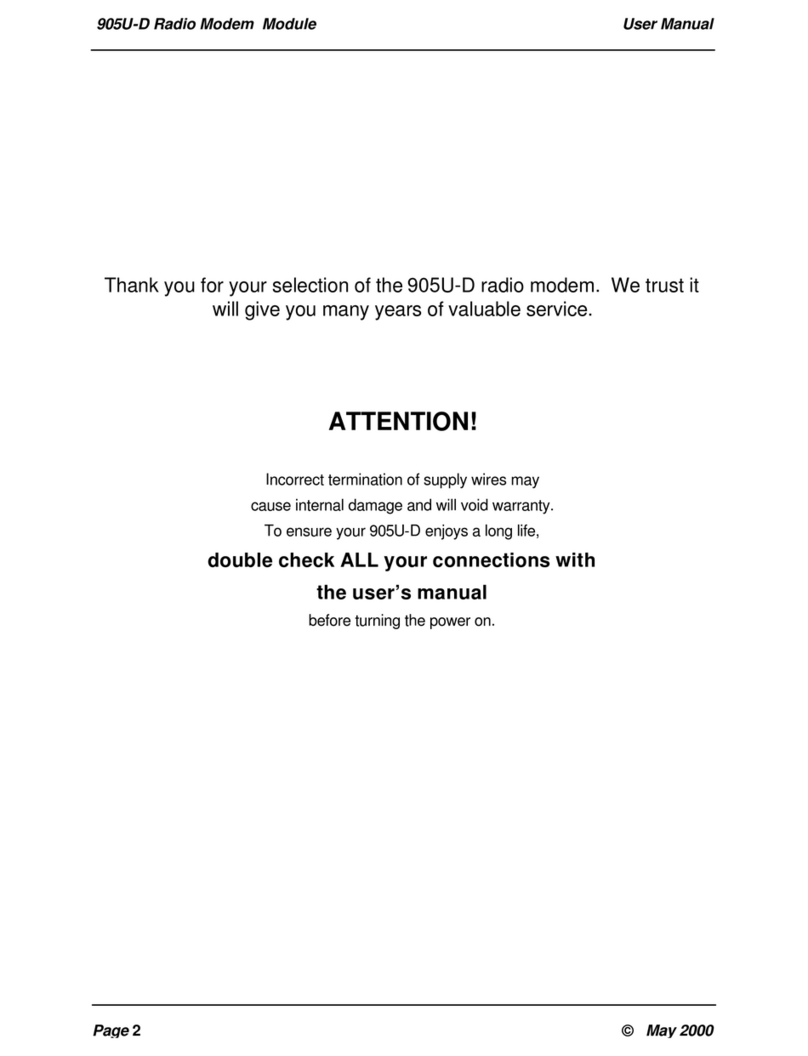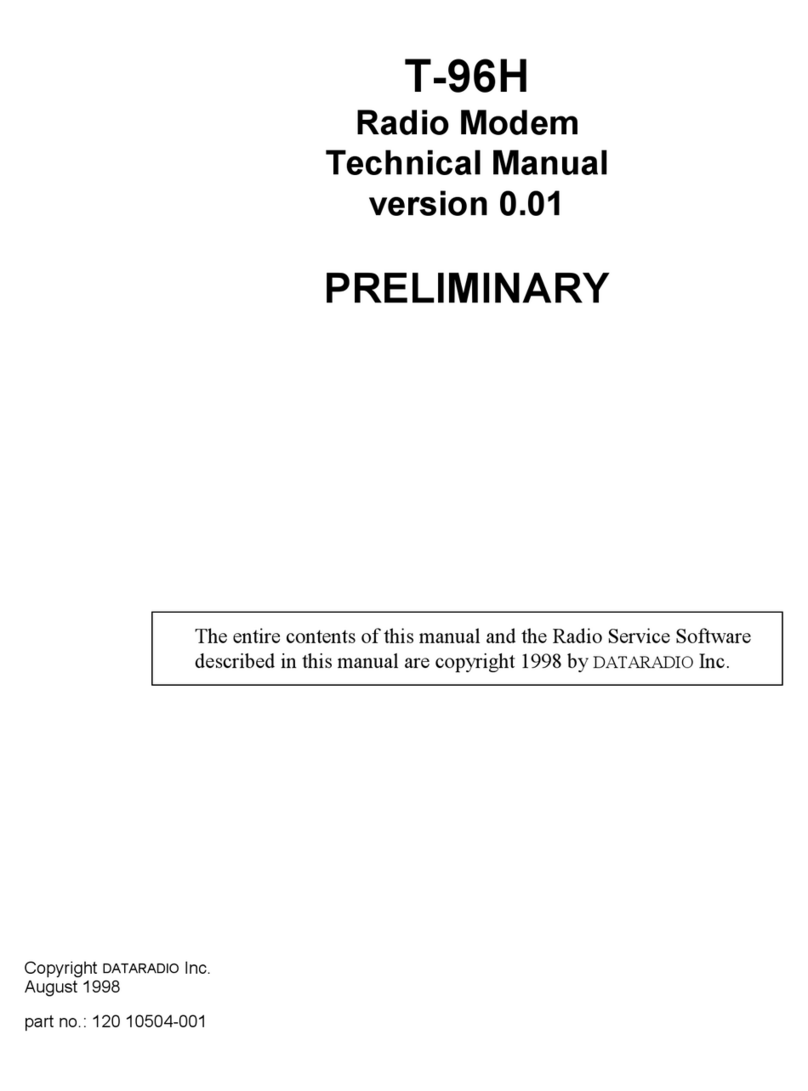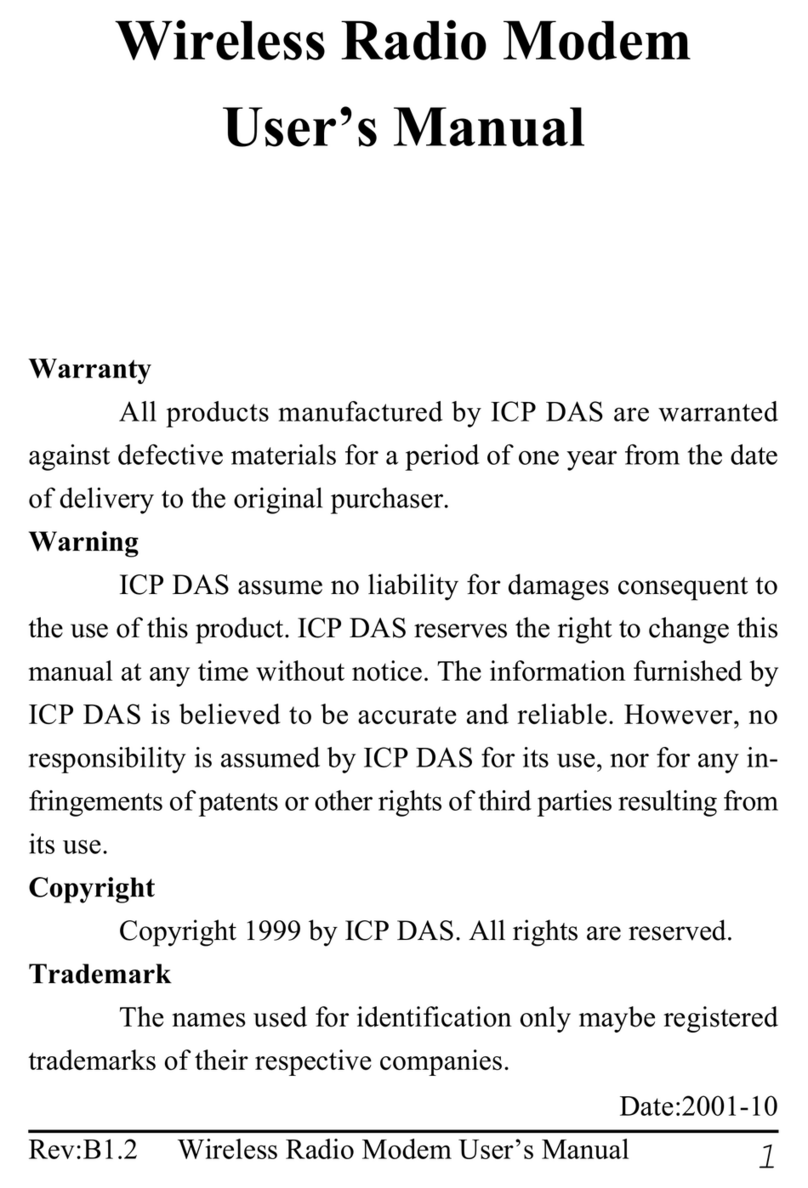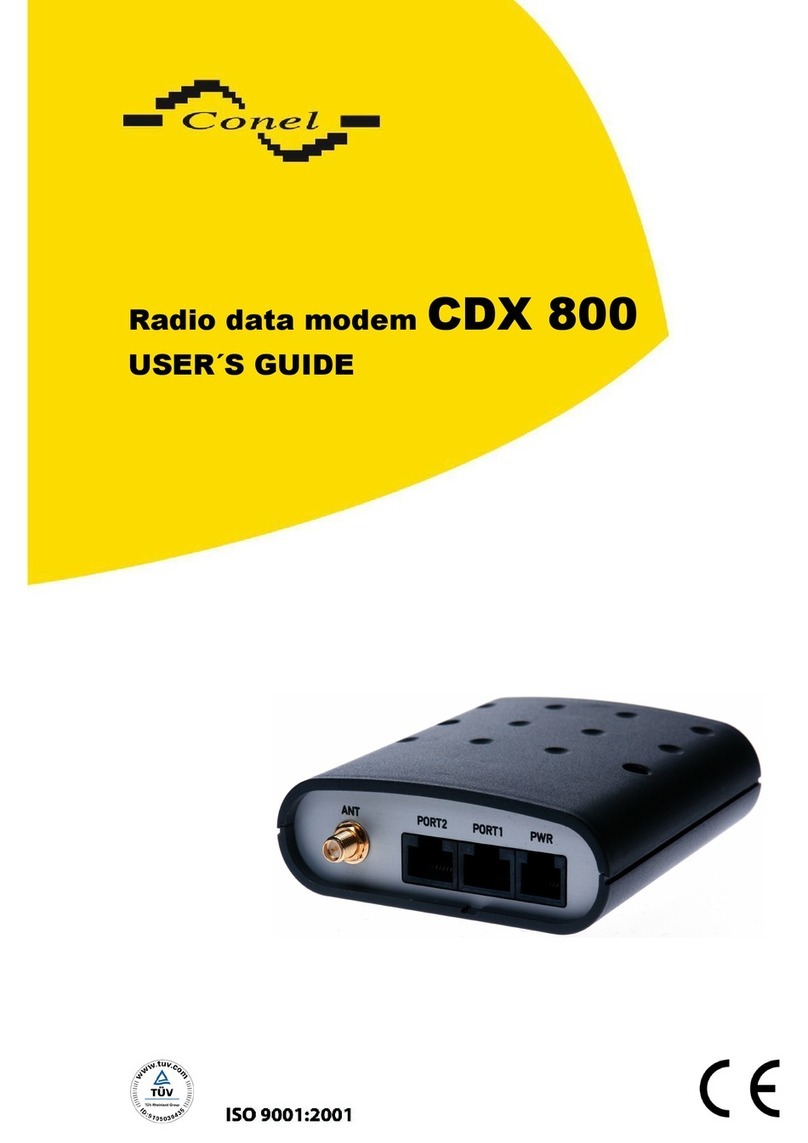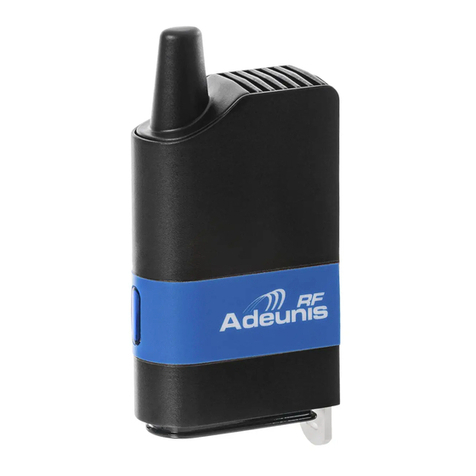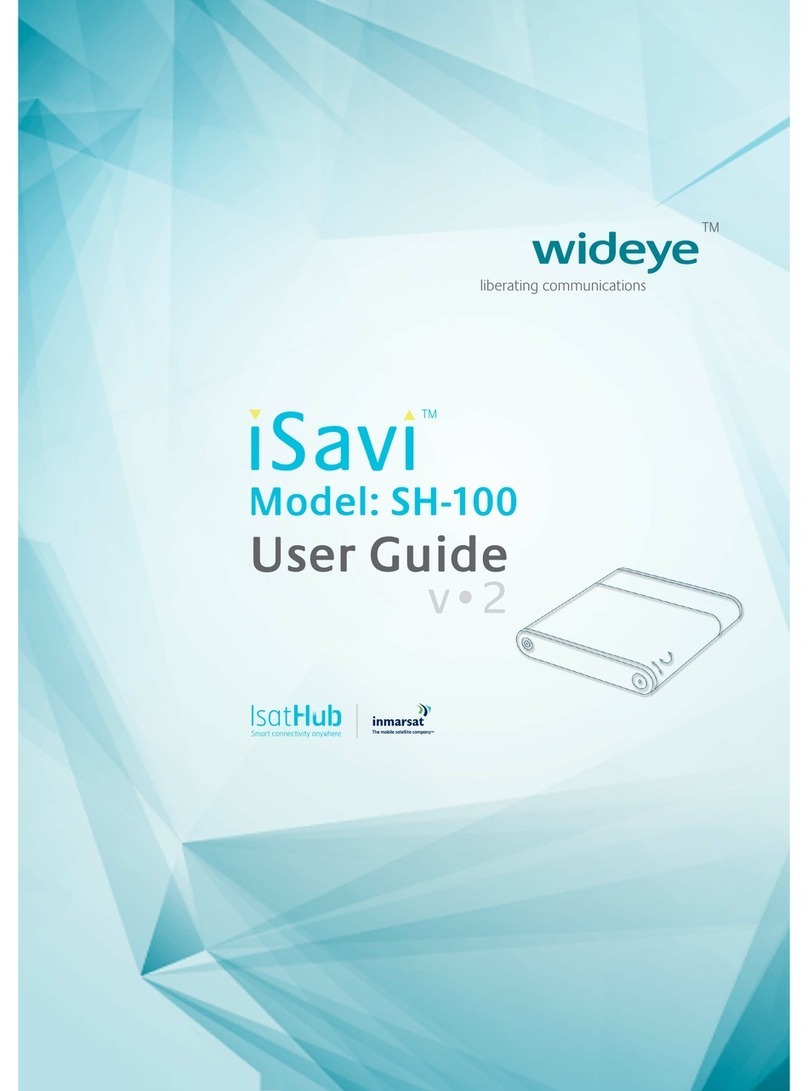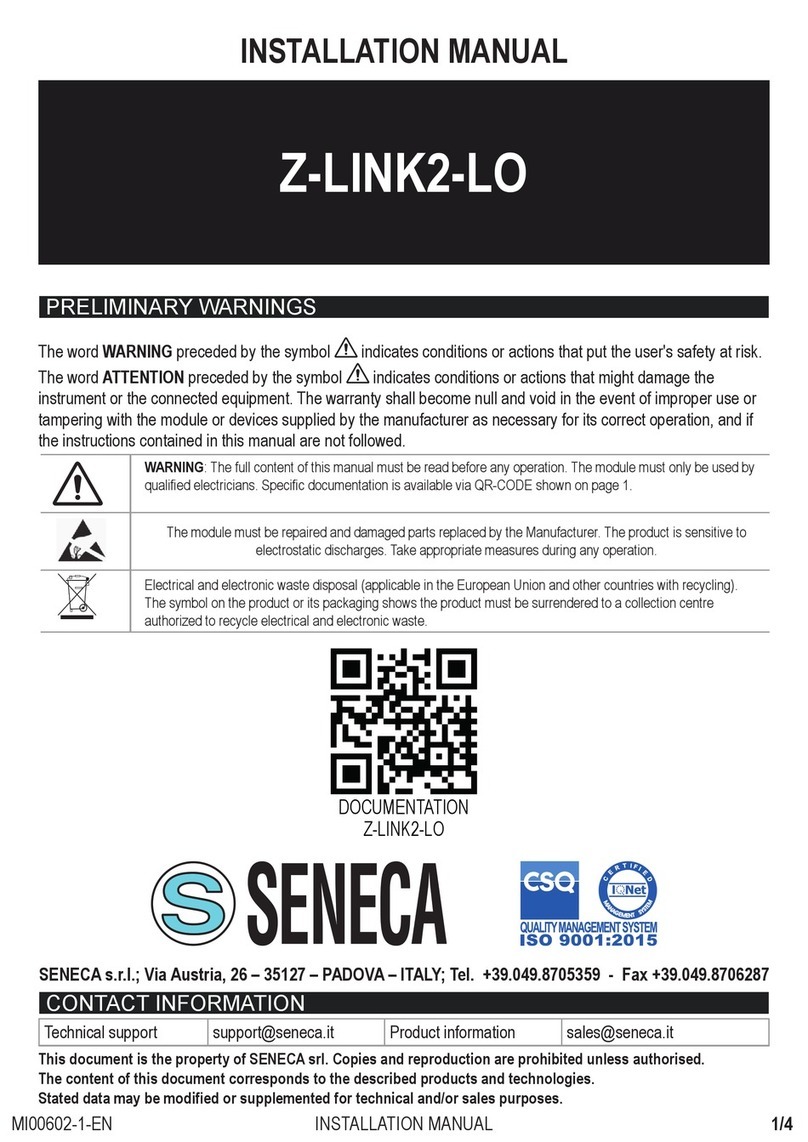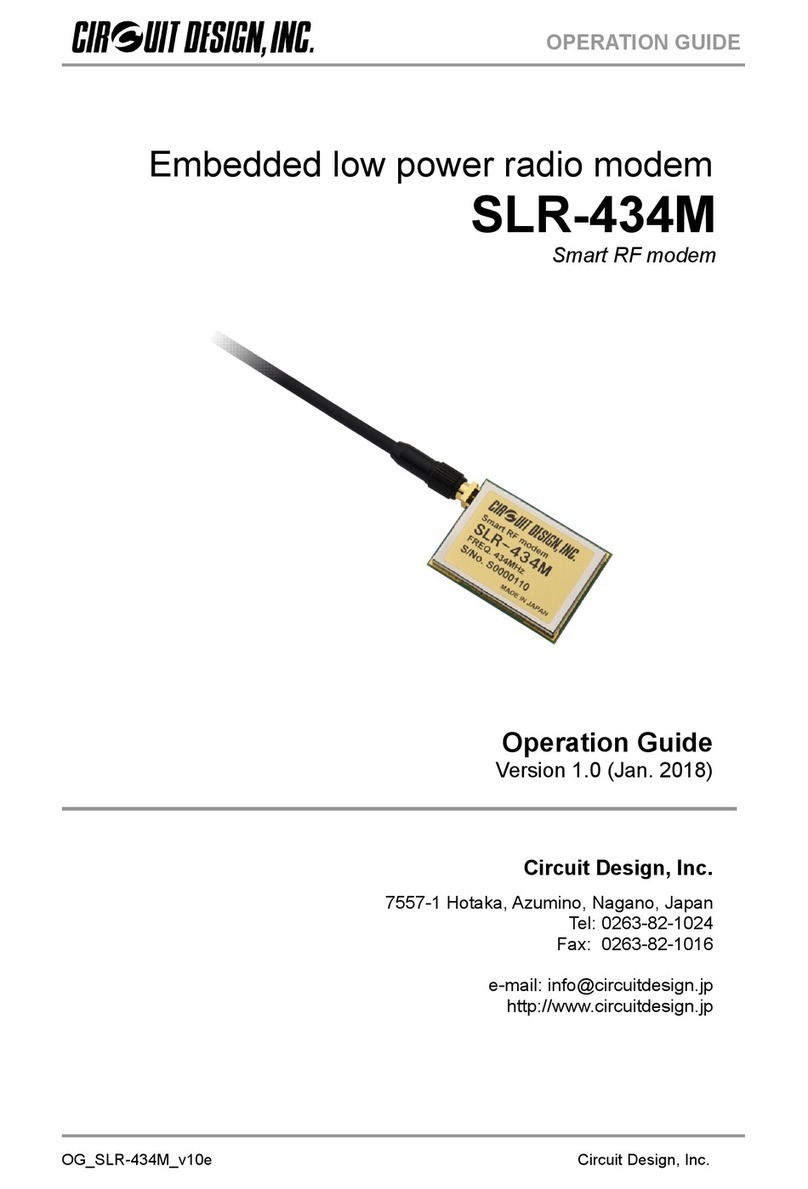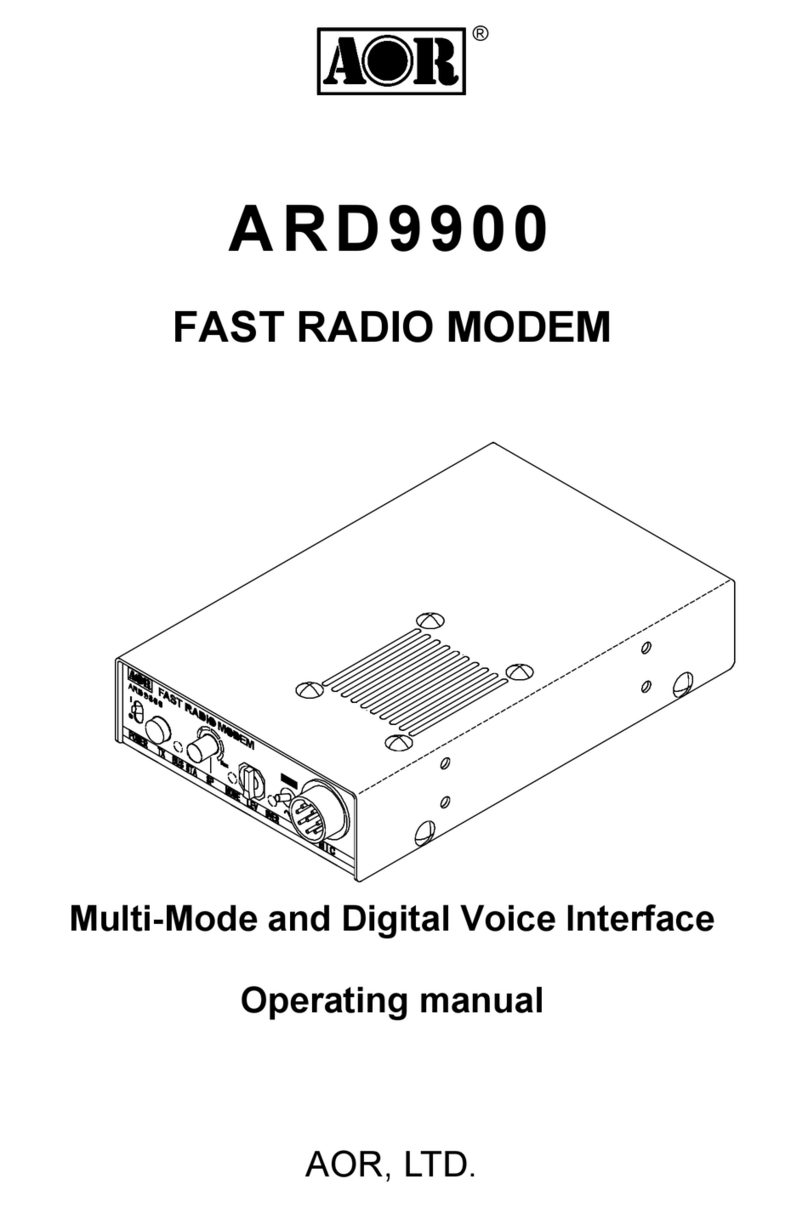
SATELLINE-3AS
User Guide, Version 2.7
2
SATELLINE-3AS(d) radio modems have been designed to operate on frequency ranges, the
exact use of which differs from one region and/or country to another. The user of a radio
modem must take care that the said device is not operated without the permission of the local
authorities on frequencies other than those specifically reserved and intended for use without a
specific permit.
(380…470 MHz) is allowed to be used in the following countries, either
on licence free channels or on channels where the operation requires a licence. More detailed
information is available at the local frequency management authority.
Countries*: AT, AU, BE, BR, CA, HR, CZ, CY, DK, EE, FI, FR, DE, GR, HK, HU, ID, IS, IE, IL, IT,
KR*1, LV, LT, MT, MY, MX, NL, NO, OM, PL, PT, RO, RU, SG, SK, SI, ZA, ES, SE, CH, TH, TR, UA,
GB, US and VN.
*1 Special version for Korea available.
is designed to operate in the following countries listed below
on the licence free frequency band of 869.400 – 869.650 MHz (not incorporating the band
869.300 – 869.400 MHz) according to recommendation CEPT/ERC/REC 70-03. This
recommendation has been drawn up by the European Radiocommunications Committee (ERC)
under CEPT. The transmit/receive duty cycle of the individual unit is limited to 10% on this band,
and a single transmission period must not exceed 36 s. In addition, the maximum allowed
radiated output power is 500 mWERP.
Countries*: AT, BE, HR, CZ, DK, EE, FI, FR, DE, GR, HU, IS, IE, IT, LV*2, LT, MT, NL, NO, PL, PT,
SK, SI, ES, SE, CH, TR and GB.
•*2 Max. ERP 10 mW
•
•
is allowed to be used in the following countries, either on licence
free channels or on channels where the operation requires a licence. More detailed
information is available at the local frequency management authority.
•
•Countries* for the version of 12.5 kHz channel spacing:
AT, AU, BE, CA, HR, CZ, DK, FI, FR, DE, GR, ID, IS, IE, IL, IT, LT, LV, MY, MT, NL, NO, OM,
PL, PT, RO, RU, ZA, ES, SK, SE, CH, TH, TR, UE, GB, US and VN.
•Countries* for the version of 25 kHz channel spacing:
•AT, AU, CA, EE, FI, DE, GR, HU, IS, IE, LT, LV, MY, MT, NO, OM, PL, RO, RU, SK, ES, CH, TH,
TR, UA, US and VN
Users of SATELLINE-3AS(d) and Epic radio modems in North America should be
aware, that due to the allocation of the frequency band 406.0 – 406.1 MHz for government use
only, the use of radio modem on this frequency band without a proper permit is strictly
forbidden.
In addition project approvals available for IN, KZ and TW.
* codes of the countries follow the ISO 3166-1-Alpha-2 standard
